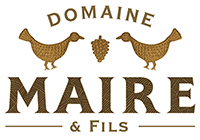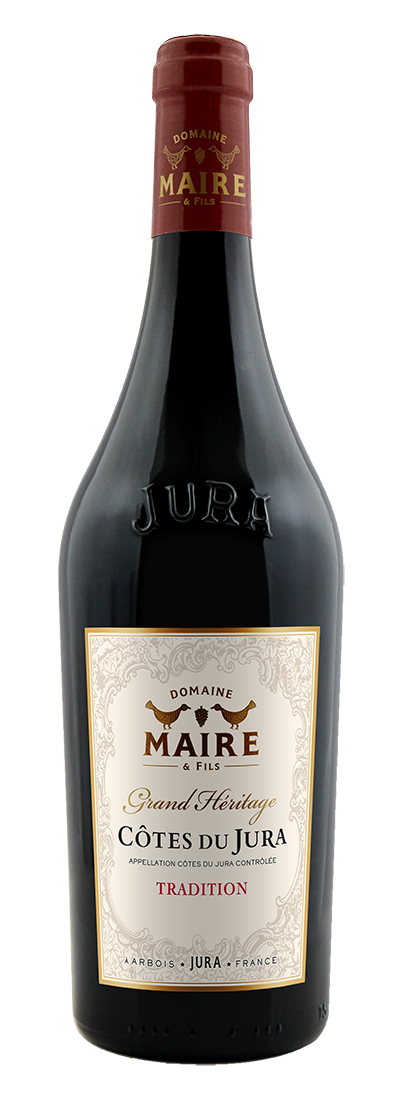CÔTES DU JURA - TRADITION 2022

click on one of the vintages below for further information
Several generations have been necessary to patiently built one of the largest and greatest estates in the area, focused on key appellations such as Château-Chalon, l’Étoile and Arbois. The Domaine MAIRE & Fils covers nowadays 234 hectares of vines producing all the area grapes varieties.
In the glass the wine offers an intense dark cherry-red colour. The nose gives off small red berries aromas, with pleasant spicy hints. In the mouth, the wine is lively, with hints of spice and ripe fruit. It has an elegant structure and a long, elegant finish.
The work in the vines, is based on the respect of the nature and the soil. For young vines, located on steep slopes, to avoid erosion, we cultivate a row out of two, practice soil reassembly to aerate the lands subjected to settlement due to moisture, and grass with plants.
Such as clover, which, by competing on the vine, can modulate its mineral and water supply and control its vigor and yield.
The restructuring of the vines contributes to the harmony of our cuvée: the young vines bring the exuberance, the freshness and the acidity. While the older specimens bring the structure and character.
At the moment of pressing, the press and drop juices of each cuvee are assembled and withdrawn for malolactic fermentation on fine lees.
The wines are then aged in stainless tank for 8 months and blended together (70 % Pinot Noir, 20 % Trousseau and 10% Poulsard) before light filtration and bottling.
Having endured the nights at the beginning of April, we were spared from the effects of the frost. A budburst on 13 April and flowering on 23 May promised an early harvest. June saw more than 150 mm of rainfall, allowing the marl soils to build up some healthy reserves to cope with the hot summer weather.
The harvest, running from 16 August to 15 September. The excellent health of the grapes allowed us to prolong the harvest until mid-September, with the opportunity to boost the maturity of the reds to their best polyphenolic potential, particularly for the Pinot Noir grapes, creating powerful, full-bodied wines. The white Chardonnays and Savagnins express floral aromas with a perfectly balanced mineral structure.
The harvest, running from 16 August to 15 September. The excellent health of the grapes allowed us to prolong the harvest until mid-September, with the opportunity to boost the maturity of the reds to their best polyphenolic potential, particularly for the Pinot Noir grapes, creating powerful, full-bodied wines. The white Chardonnays and Savagnins express floral aromas with a perfectly balanced mineral structure.
WINE SPECTATOR -
90pts - August 2025

